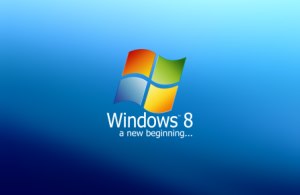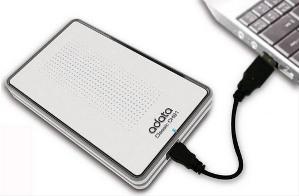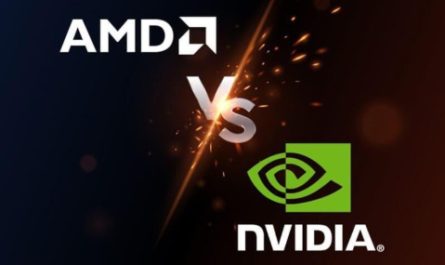Solid State Drives (SSD) and conventional Hard Disk Drives (HDD) are both forms of non-volatile, electronic data storage. HDDs, developed by IBM in 1956, have been the mainstay of the computer market for over half a century. Over the years, advances in technology and design have led to an increase in size, performance and reliability of HDDs, while decreasing price and failure rates. However, the basic mechanism of read and write heads accessing magnetically-coated rotating disks, remains the same.
SSDs, in their earlier versions, have also been in existence since the 1950s. The primary difference is that SSDs store data on memory chips (integrated circuits) as compared to the physical disks of HDDs. Today, there is a market for both HDDs and SSDs because of their stark differences. SSDs draw less power because they don’t have any moving parts. This translates to better battery life in the device that holds the SSD. It also means that the SSD is physically lighter, quieter, cooler and less prone to vibration and shock damage. By eliminating
the mechanical parts, radically faster data storage (reading/writing) rates are achieved. All these benefits do come at a price though: SSDs are substantially more expensive, and are limited in their physical capacity. Currently, an internal one terabyte (TB) HDD for a laptop retails from approximately 72.99 US dollars to 389.99 US dollars. In contrast, a 512GB internal laptop SSD ranges from 399.99 US dollars to 839.99 US dollars. Buying an SSD which has a comparatively lower capacity is far more affordable, such as the 124.99 US dollars for a 128GB SSD found in many high-end laptops.
The differences between SSDs and HDDs go beyond their physical attributes and financial considerations, into the roles they play in technology and its progress.
The need for SSDs
In the past, the world found its technological footing on the back of hard disk drives: from the early days of personal computing to the evolutionary journey of media on the internet. The 90s saw, along with the meteoric rise of Microsoft, the firm establishment of computers in the enterprise. Dell, HP and other PC manufacturers were all selling PCs using conventional HDDs. There was no compelling reason to look for alternative technology simply because power management, weight and boot times were not an issue. Additionally, there were substantial differences between software capability, processor configurations, memory size, data rates and disk sizes. All of the aforementioned parts functioned at various speeds and needed significant advancement to function in unison. Earlier versions of Windows could support many more processors than the available hardware could put together economically. Today, we’re coming to the juncture where data/storage read/access times are fast enough to accentuate the processor’s performance and provide an unprecedentedly fast computing experience.
It wasn’t until Apple introduced the iPod Nano in 2005 that the use of SSDs in mass- market consumer electronics became apparent. This implementation enabled a smaller and lighter form factor with a long battery life. The myth of efficient, economical and effective mobile computing inched further towards reality with the launch of Apple’s iPhone in 2007. People became more and more accustomed to the simplicity of the User Interface (UI) quintessential of all Apple products, and suddenly ‘smartphones’ were not only for corporate users.
Speed and size weren’t the only reasons for the increase in adoption rates; battery performance saw significant improvement in mobile devices partially due to the implementation of SSDs. Also, the combination of low-voltage mobile processors and cheaper bandwidth made it easier for people to be productive while being mobile all day. Work productivity was further enhanced by advanced devices capable of complex processing and the necessary connectivity to interact with others.
Solid growth
Tablet computing, based on SSDs, has only increased the demand for mobile computing. Last year was the first year that smartphone sales outnumbered PC sales in North America. Mobile computing has given life to new technologies and new industries. The app economy (apps are small programs that run on mobile computers) is a multi-billion dollar industry by itself. The use of SSDs in laptops and now even desktops is helping these machines perform much faster. Recently we have seen the rise of cloud computing and its frantic adoption by the business world, as it struggles to stay abreast of emerging trends. Cloud computing, among other things, enables a user to access the same information from all their devices. It also consistently backs up all data changes as they are made, and remembers the user’s computing history, whether it is mobile browsing or document editing. These small enhancements mean adding Ul elements which means a lot smaller I/0s (Input/Outputs) which are better handled by a SSD, rather than a HDD.
We are becoming accustomed to updating electronic gadgets at short, regular intervals. Mobility is playing an increasingly important role in our computing needs. Advances in materials, semiconductors and battery performance are ensuring that technology continues to evolve at a rapid pace. Dissemination of information via the internet is making people learn, and coordinate more easily to conceptualize new businesses, whether electronic or not. Productivity applications of all sorts are enabling people to accomplish more by themselves at a quicker pace. Social networking is leading to more opportunities via better communication. Currently all this indicates that people are being empowered by technology to do more and that isn’t a trend which is likely to be reversed anytime soon. Extrapolating the current scenario, it is a safe bet that the demand for mobile technology, hence SSDs and bandwidth, is going to become insatiable, as it continues to play an increasingly-pivotal and intrinsic role in human productivity.


